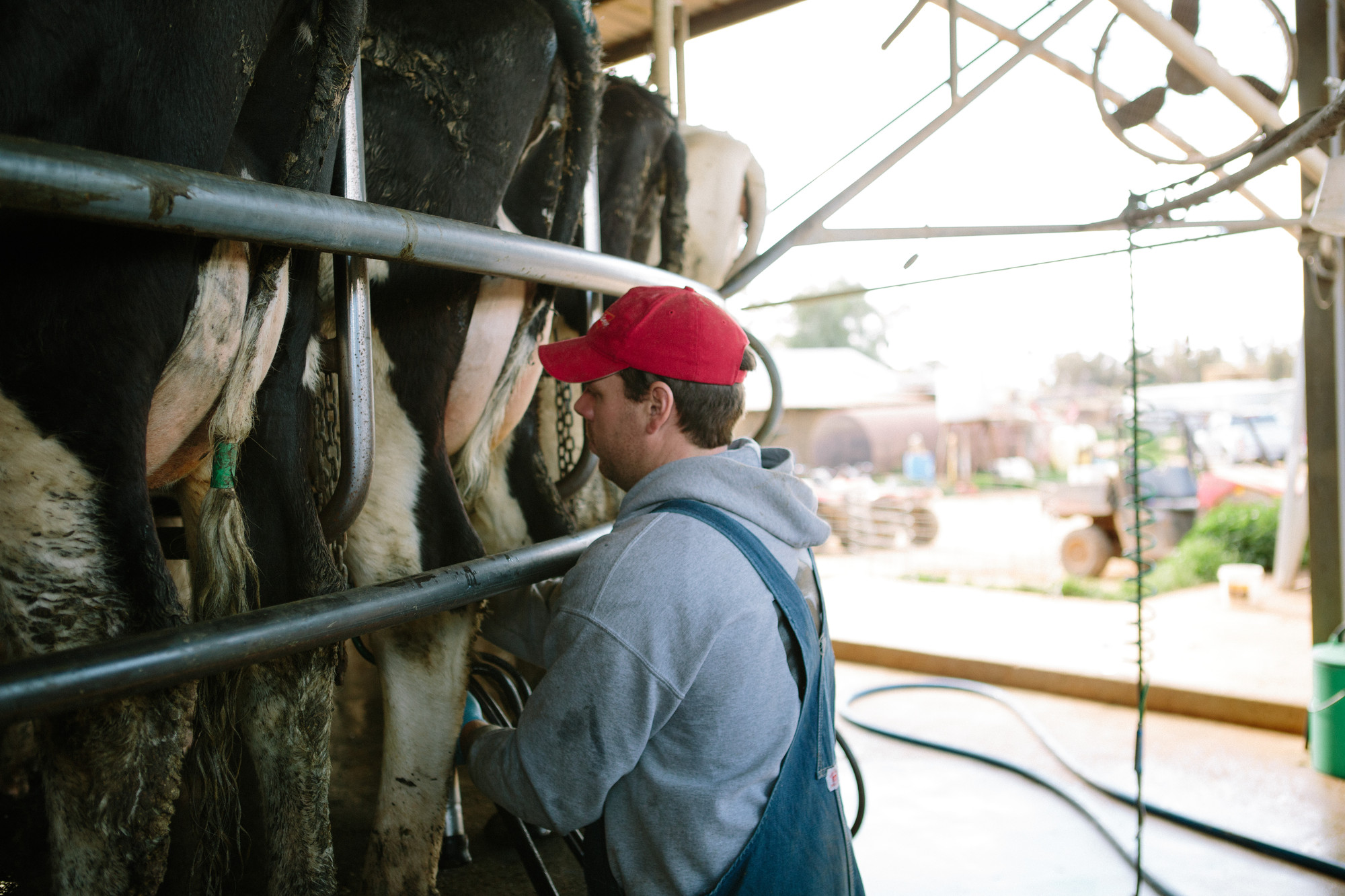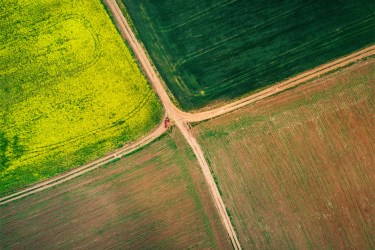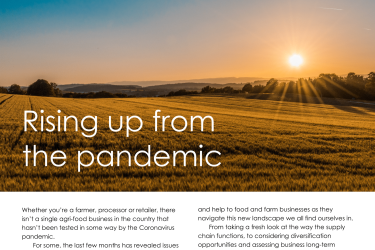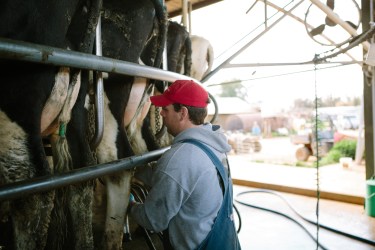Looking back at the first half of 2020 will erupt a huge concoction of emotion within everyone across the world. It was a blur of chaos, confusion and, most importantly, COVID-19. Right at the forefront of the complex situation sat the dairy industry, as it battled unprecedented disruption due to the complete loss of the foodservice and hospitality markets.
Unfortunately, as we head deeper into the latter part of the year, that feeling of uncertainty has yet to go away and concern is still rife amongst dairy farmers.
Is this to be expected?
Well in short, yes. While supply growth has been normal thus far in 2020, demand has been weaker and is expected to remain so for the rest of the year. This is having quite an effect on the world milk price, which is set to drop over the next 6 months to US$30/100kg (IFCN). An average demand growth is needed to keep the world milk price around $34.
These figures may appear worrying, but does it have to be all doom and gloom? According to the dairy experts speaking at this year’s IFCN Supporters Conference, the fear of COVID-19 is in danger of being bigger than the actual impact on the dairy sector.
Looking ahead
Looking towards the dairy world after the pandemic, the IFCN conference was an optimistic one. A panel of industry leaders commented on growth, opportunity and new developments – included in the discussion was milk demand and price. The world milk price is set to rebound in 2021 to $34-37, while growth in milk demand and supply is estimated to be +60% over the next 30 years. Between now and 2025, population will grow, production will change and there will be an increase in dairy trade.
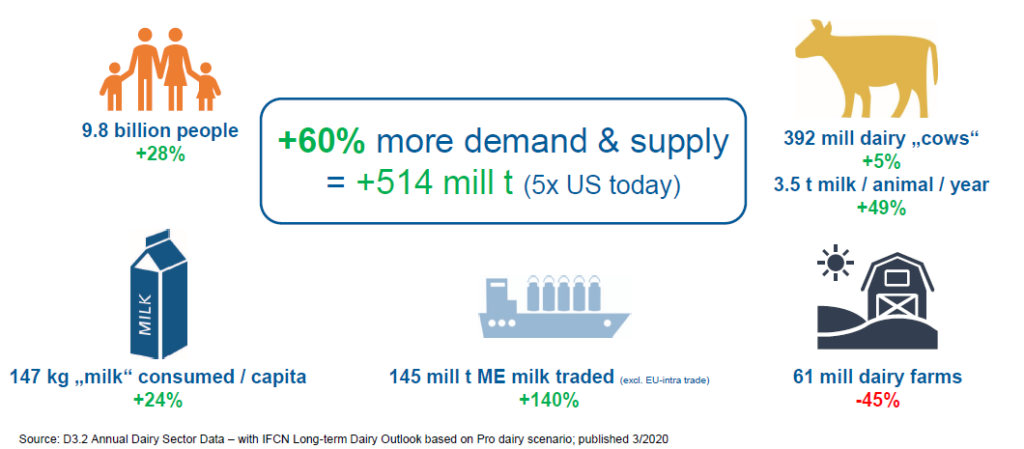
The 2050 outlook also indicated great change ahead for the dairy sector and various perspectives were shared on what will and won’t be important.
Reconnecting the consumer
Consumer habits are evolving as we learn to adapt to new technologies and a post-covid world. It has never been more important for the industry to recognise these changes and react accordingly to reconnect the consumer.
Across the world, more customers want to know exactly where their dairy products are coming from and the journey they have to make to get to the fridge. Whether it is awareness of food health and safety or sustainable practices, farmers and retailers have a responsibility to be transparent. This starts with collaboration and communication. These two popular buzzwords will help to demonstrate integrity in production and provide a proactive approach.
Local for local has also become a strengthened buying concept, with more consumers turning to a local supplier for their goods. Going back to the roots of consumption is a valuable movement and, if utilised properly, can hold huge benefits for the farmer.
As Doug Young, a dairy farmer for Spruce Haven Farm, USA, states: “COVID-19 has re-awakened consumers and their need to get back to basics. And when you think of basics, what is more basic than milk.”
Investing in innovation
New technologies are jumping headfirst onto the scene and disrupting the industry as we know it. This has never been truer a statement than today, with experts suggesting that more information, decision making and real-time connectivity will need to be tech-led in the future. Whether it be on farm through the digitalisation of IT farm management or robotization, or accelerating traceability across the supply chain, being proactive with innovation is the way forward.
In Tom Lee Bauer’s, Principal Industry Specialist at IFC/World Bank, words: “Real milk is cheaper with real innovation.”
Milk is gold
This outlook from the panel was exciting and hopeful, but we can’t ignore the uncertainties that popped up amongst the audience when discussing the 2050 outlook: milk alternatives, the potential of a new milk quality scandal or a new pandemic, dairy food waste reduction, climate change policies, dairy trade policy and individual country nuances. These are all very real and must be considered. Fail to do so, and you could lose consumer trust and new opportunities will become less accessible.
According to industry leaders, dairy farming must be positioned as being part of a solution for society. No matter what, milk is gold and its value needs to be highlighted. This way the industry can collectively make positive changes in a world where it is so easy to get caught up in complexity and negativity.
Are you interested in finding out more about the dairy opportunities available across the rest of the world? Our very own Caroline Dawson, Head of Agri-Food, was a special guest on AHDB’s podcast discussing the dairy export opportunities in the Middle East. Click here to listen now.




